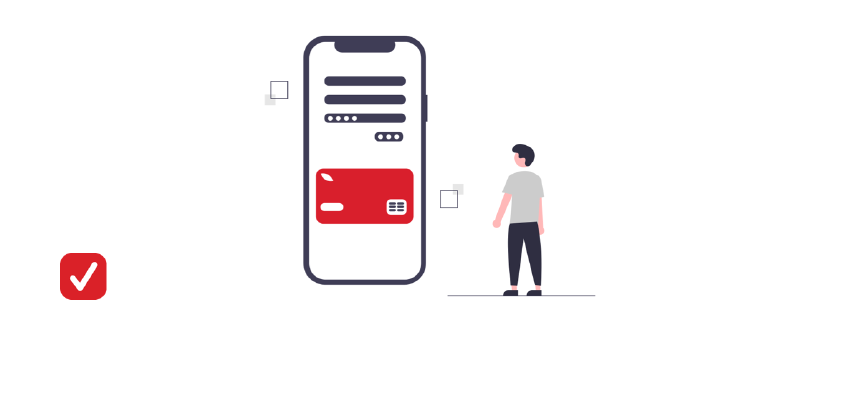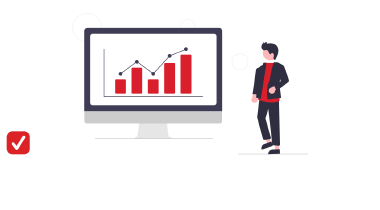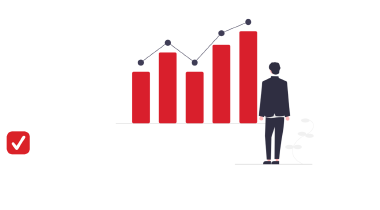Order to Cash software (O2C)

What is the use of your commercial efforts if in the end the invoice does not get paid? And how does delayed payment affect your business and ability to grow? If you reflect on all the time, money and energy we put in marketing, sales, product development, delivery and customer service, how much boardroom attention does your order to cash system (O2C) get? If we approach your O2C cycle as an integrated part of your sales & marketing processes and aim to mature your way of working with regards to accounts receivable, you might find a number of leads on how to improve your Days Sales Outstanding (DSO) and learn how Order to Cash software can be used to enhance both the customer journey and cash flow within your company.
What is Order to Cash software?
The order-to-cash process begins the moment a customer places an order. The main part of the O2C process is complete when the order is paid for, however, there are other important steps that occur, even after payment. The invoicing and accounts receivable functions carried out during O2C determine the company’s cash inflows. Delays in collection can complicate accounts payable, payroll, potential acquisitions, and other issues related to liquidity. Managing a reliable and consistent O2C process shows that your organisation is professionally mature. To manage the process well, you need to be excellent at every aspect of business. Cash collection software contributes significantly to make your company more reliable and consistent and therefore more professional. With increased cash flow of up to 50% as a logical and predictable result of your efforts. We will highlight a number of aspects in your O2C cycle where debtor management software plays a key role.
Credit management and scoring
Diligent credit management on the front end of O2C minimises issues that could occur as you reach the end of the process. Automated software can take care of straightforward approvals or denials, and finance personnel can be notified for cases that require a more thorough review. Payt helps you keep track of credit limits and credit scores. Not only at onboarding of customers, but during the whole customer lifecycle. Automated credit management software makes accounts receivable easier and strategic credit guidelines also ensure you issue credit only to (credit)worthy customers.
Customer Invoicing
Invoicing delays and inaccuracies can snowball and lead to cash problems that disrupt the entire organisation. When accurate invoices are sent out on a reliable timetable, staff in Finance can effectively forecast cash inflows and plan for expenses accordingly. E-invoicing can be automated with the correct information and sent without delay. With B2B and B2G invoicing, we see growing requirements from customers on how an invoice is delivered, related to internal processing of these invoices. E.g. clients using PEPPOL delivery, ask for UBL invoicing and make use of purchase portals or business transaction networks like Coupa, SAP Ariba en Tungsten. In B2C invoicing and B2B to SME clients we learned the significance of direct payment links and e-mandates for direct debit to dramatically improve payment behaviour and speed up payments.
Accounts Receivable
Automated systems need to flag outstanding invoices that become overdue. Payt offers debtor management software that will automatically send out first and second reminders and even final notices when clients do not pay or respond. Zero touch, working consistently based on a configured invoice and reminder flow. Accounts receivable representatives are offered a comprehensive dashboard to review issues with outstanding invoices to determine if there are any issues that would result in delayed payment.
When issues are detected, accounts receivables professionals must have a way to quickly address the issue in order to shorten lead times and therefore payment delays. The dashboard task list will help them focus on the most urgent and valuable tasks at hand. Like answering client questions, sorting out issues with the invoice or delivery and managing delayed payment plans with clients.
Payment Collections
When an invoice does officially lapse into the overdue period, the customer’s account must be flagged and their credit put on hold. When they try to place another order, the order system should alert the customer that payment needs to be sent before they can complete their next purchase. Payt support this process with offering webhook functionality to ordering systems. The accounts receivable function should immediately begin contacting customers with overdue invoices and outlining the collection procedures and potential penalties going forward. Accounting and finance leaders must also review all overdue accounts on a regular basis to keep an updated bad debt forecast and determine next steps.
Payt offers a built-in procedure for amicable debt recovery as part of her Order to Cash platform. It combines the best of both worlds. The added payment pressure and customer attention of outsourcing the follow up of outstanding debt with the benefits of keeping an eye on the long term relationship with your clients.
Reporting and Data Management
Interconnected software programs can track performance data across every stage of the order-to-cash process. By monitoring and analysing this data, company leaders can see how the overall flow of their O2C process affects everything else in the organisation. This includes the relationship with customers, the length of the sales cycle, the onboarding and customer service functions, and so on. Since the O2C journey is highly interdependent, even small inefficiencies in one function can snowball into costly problems elsewhere. Payt offers an API to include her data end points for powerful reporting. Payt clients build industry specific reports in tools like Power BI to align relevant O2C data within overall management dashboards and targets.
Why should I use an Order to Cash system?
Successful management and optimisation of the order-to-cash cycle helps businesses efficiently deliver value to their customers and receive timely payment for their services. Technology, too, can help companies improve their order-to-cash processes, which then frees up resources so staff can focus on their most important task of all: enhancing the customer experience and focus on exceptions that cannot be solved with automation..
Order to Cash app benefits
What can you expect from enhancing your order to cash system with the O2C app from Payt debtor management software? Analysing financial administrations of our clients and customer surveys deliver a consistent image of the business benefits, comparing the account receivable key performance indicators before and after implementation of Payt software for the identified account receivable challenges:
- Cash flow improvement. Payt customers experience a 30 to 50% increase in cash flow. For example in the accountancy industry we saw a structural DSO decrease from an average 61 days to 35 days within the first months. Numbers are based on more than 300 cases.
- Accounts receivable efficiency. Human intervention per paid invoice is decreased up to 80%. Thanks to automation and automated flows up to 80% of mainly repetitive tasks like reminding, payment plan monitoring and standard communication is automated with the software of Payt. Freeing up space for genuine customer attention.
- Increased customer satisfaction. Providing invoice portals with insight in due, overdue and paid and providing direct payment and communication opportunities enhances the customer experience. Clients value the offered service to align your invoicing with their needs in order to create a more seamless process between the two parties.
Are you interested in finding out more about Payt and our solutions for your challenges in account receivable management? Please contact us, we will be happy to assist you with our comprehensive software solutions.
Schedule an online demo
Curious about the benefits of Payt for your organisation? Schedule your personal online demo with Aziz! You will receive an interactive demonstration of our platform for accounts receivable management, without any obligations.

Related articles

Invoice finance software, a new way of financing your growth

The difference between invoice financing and factoring

